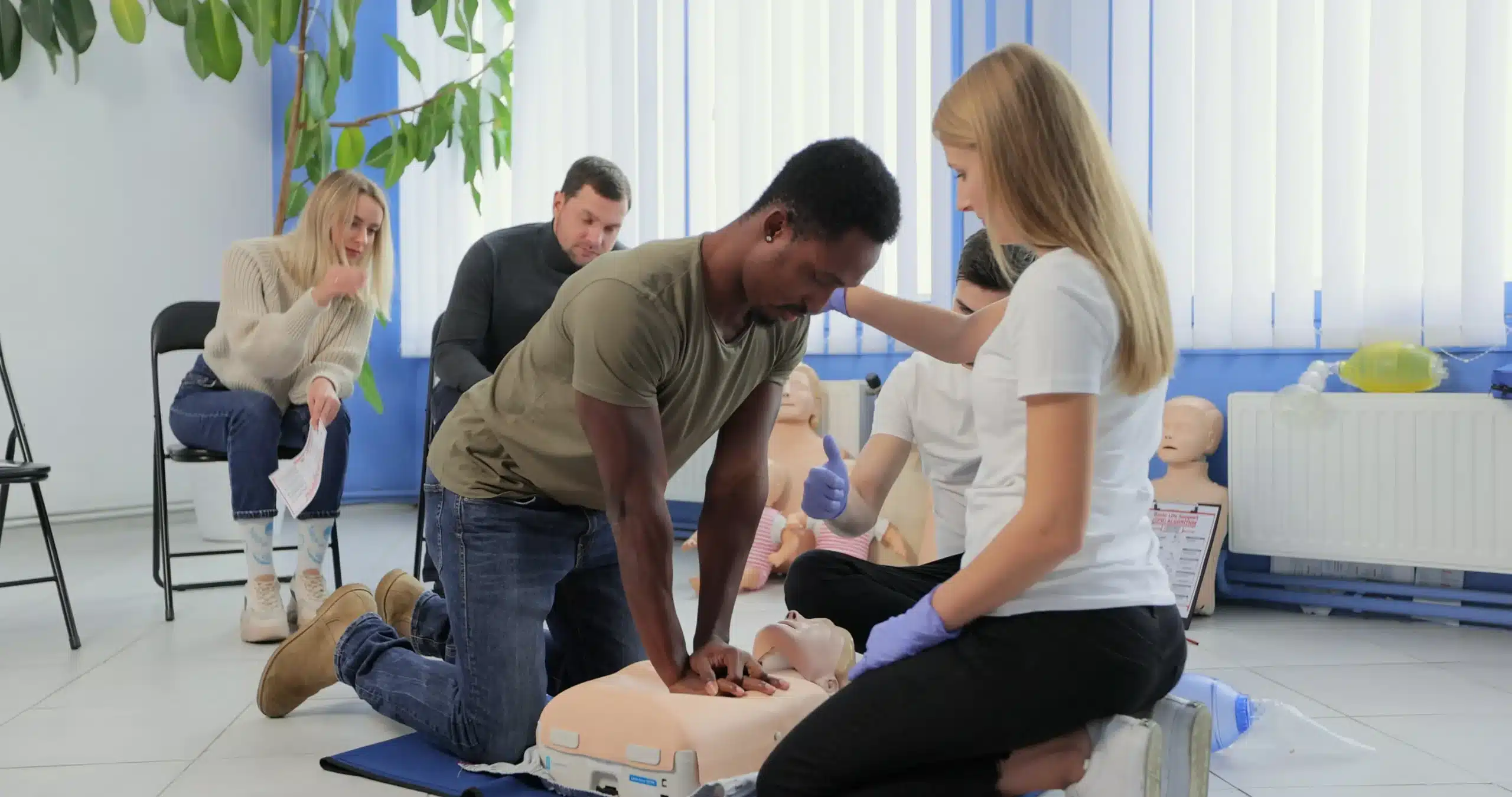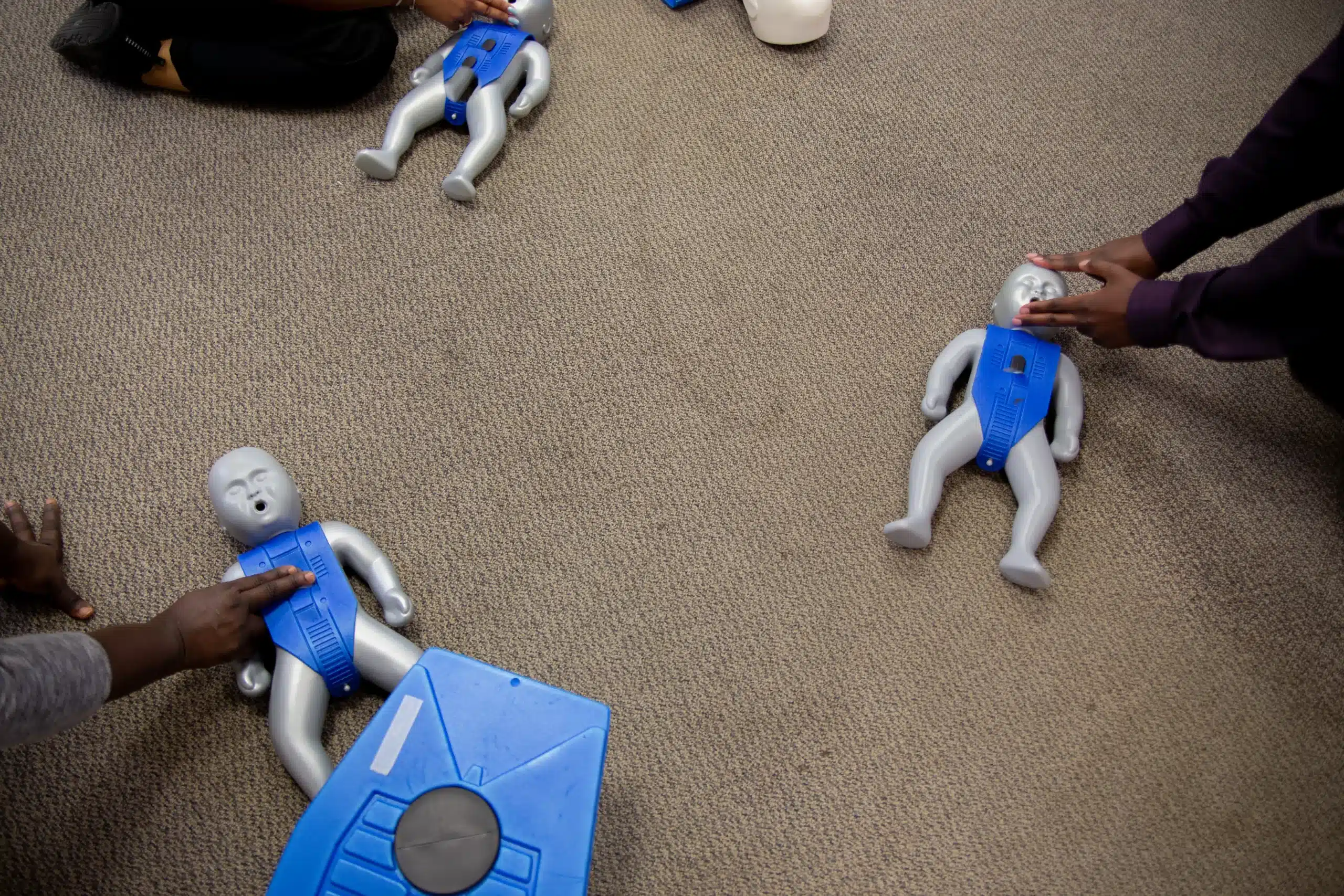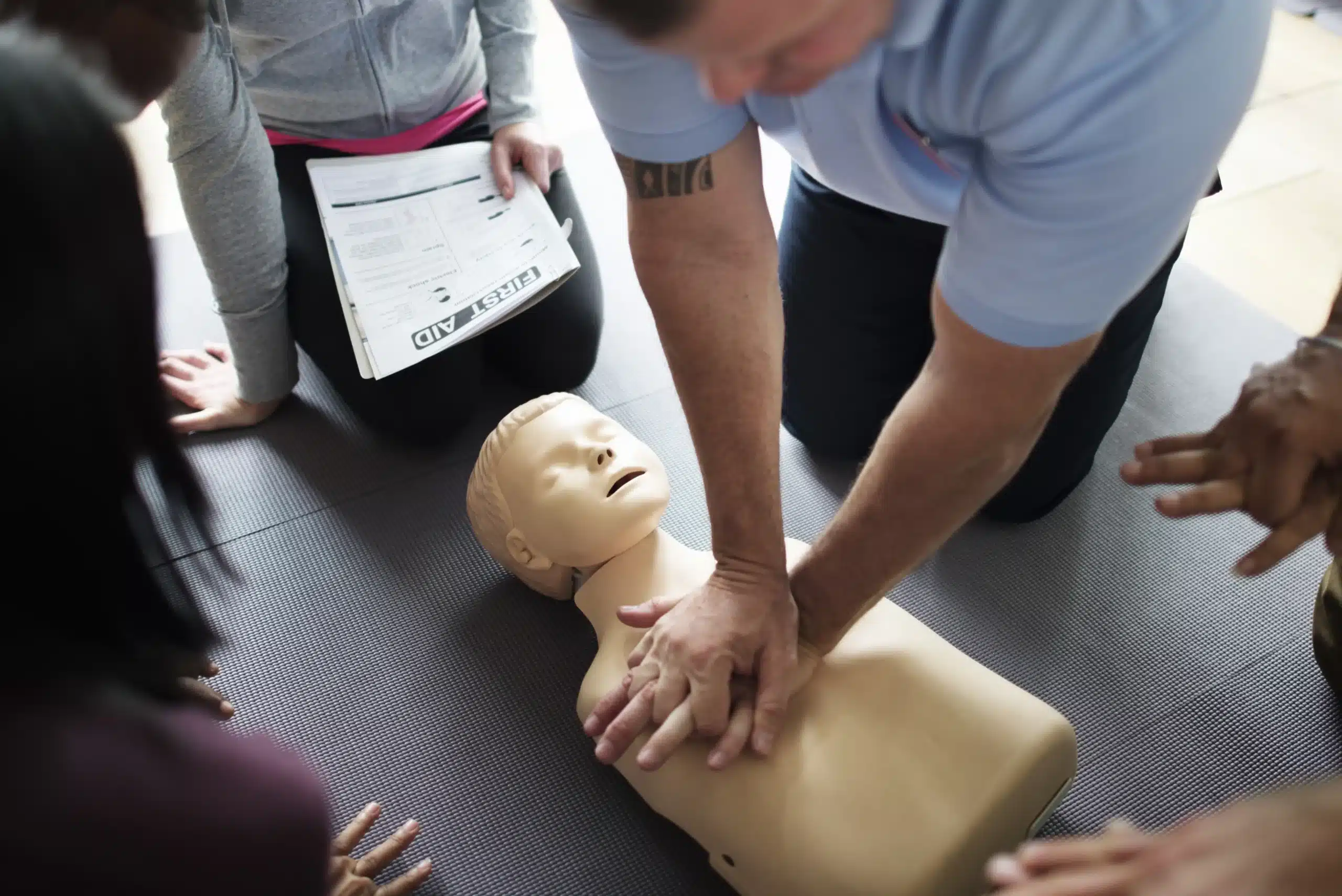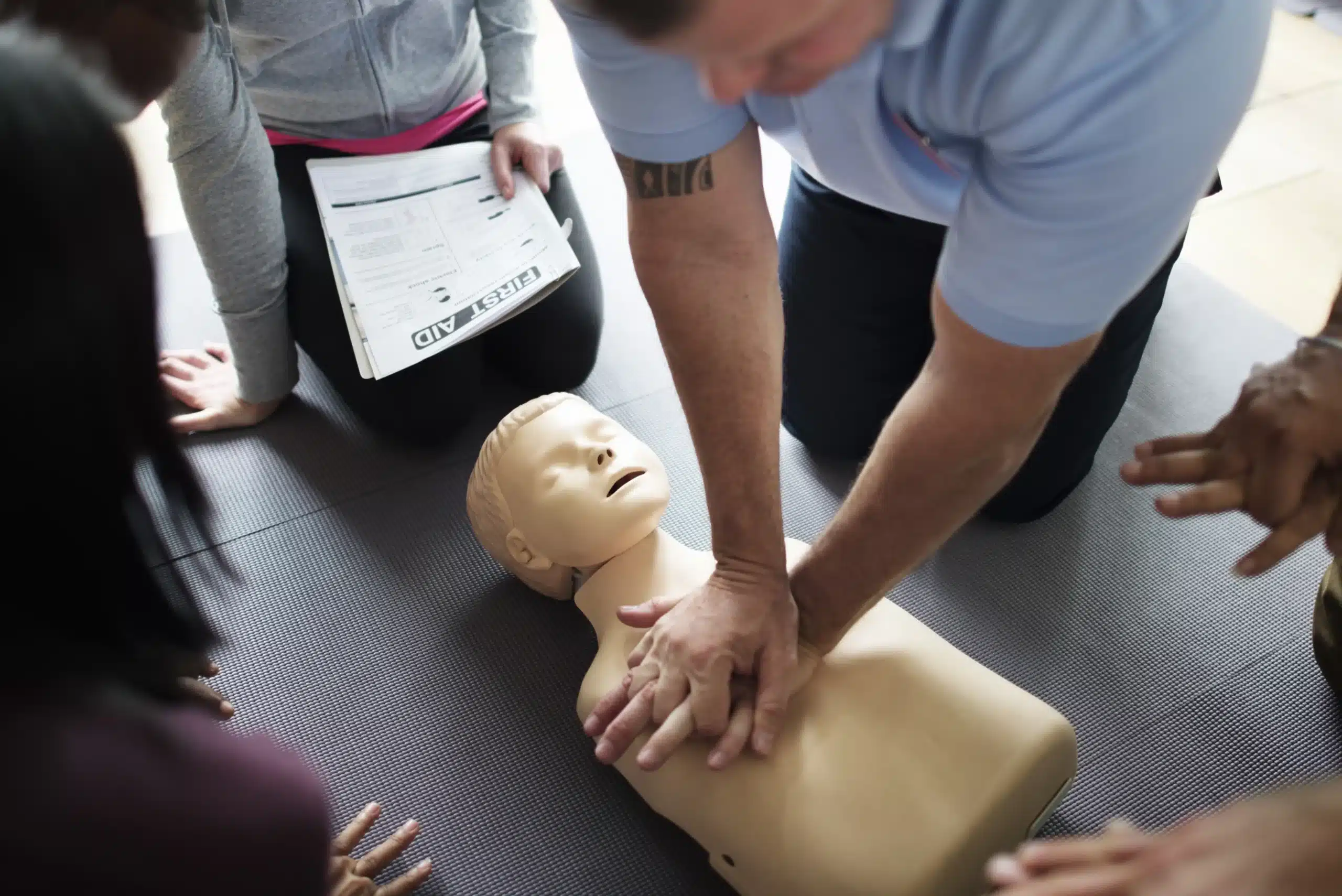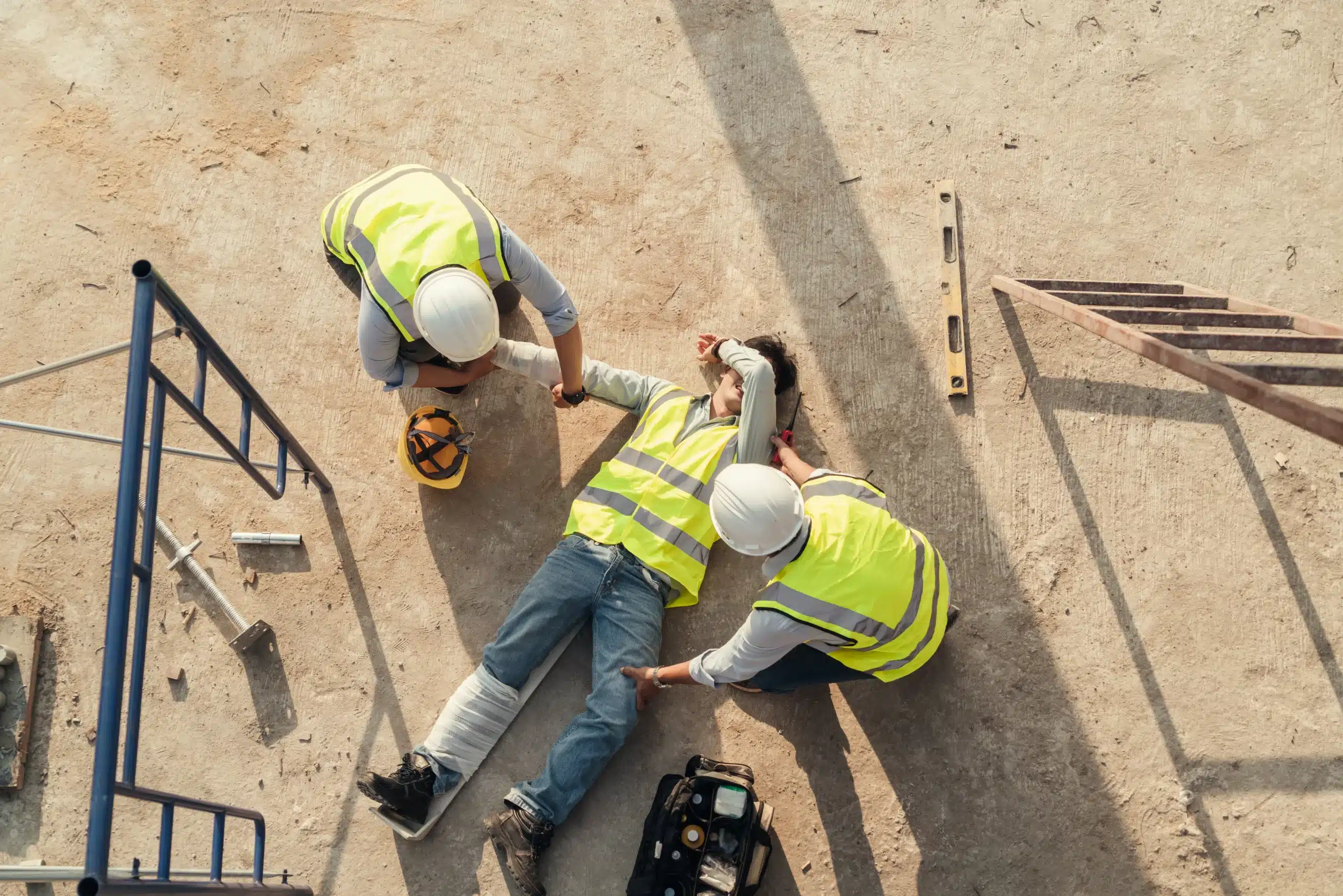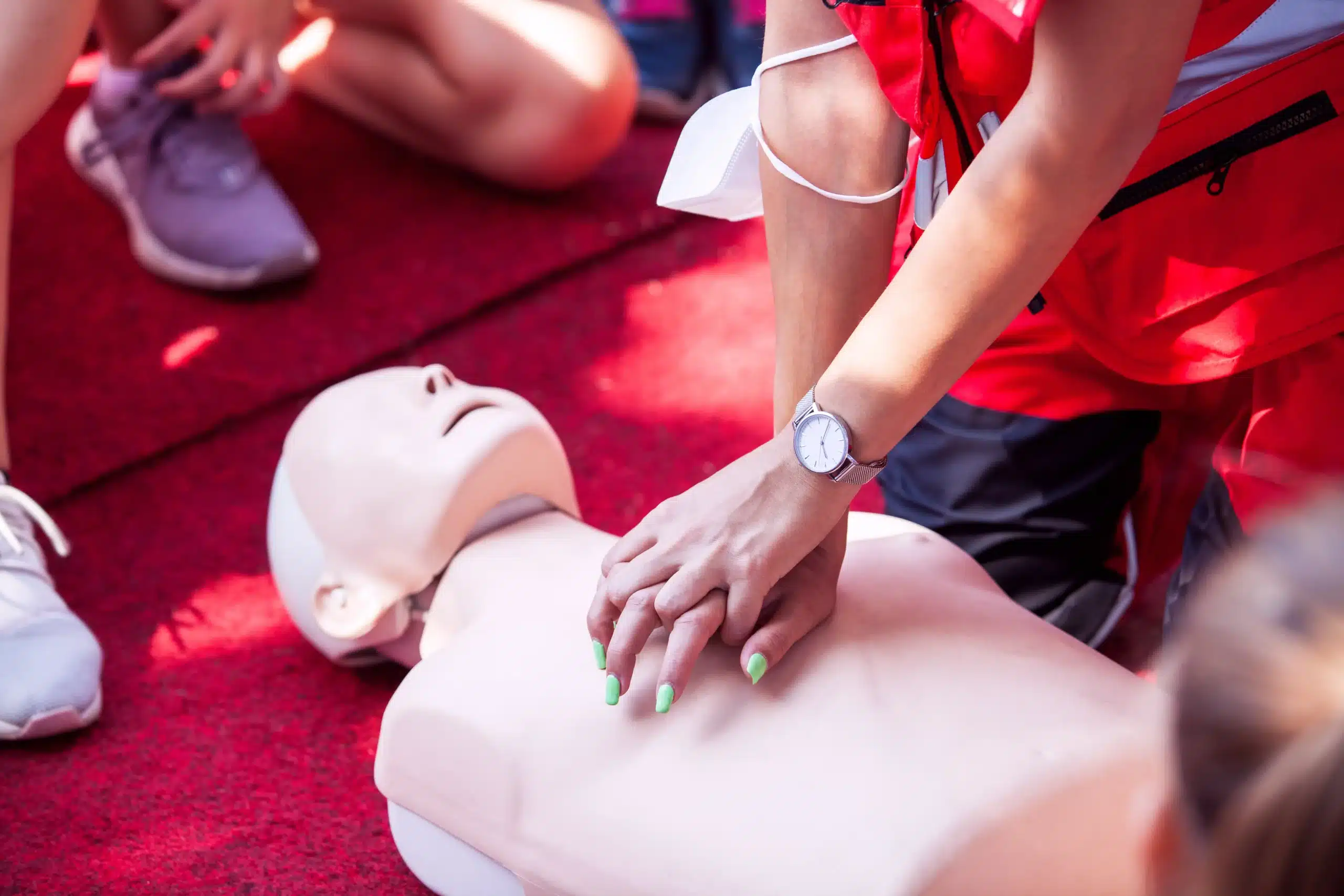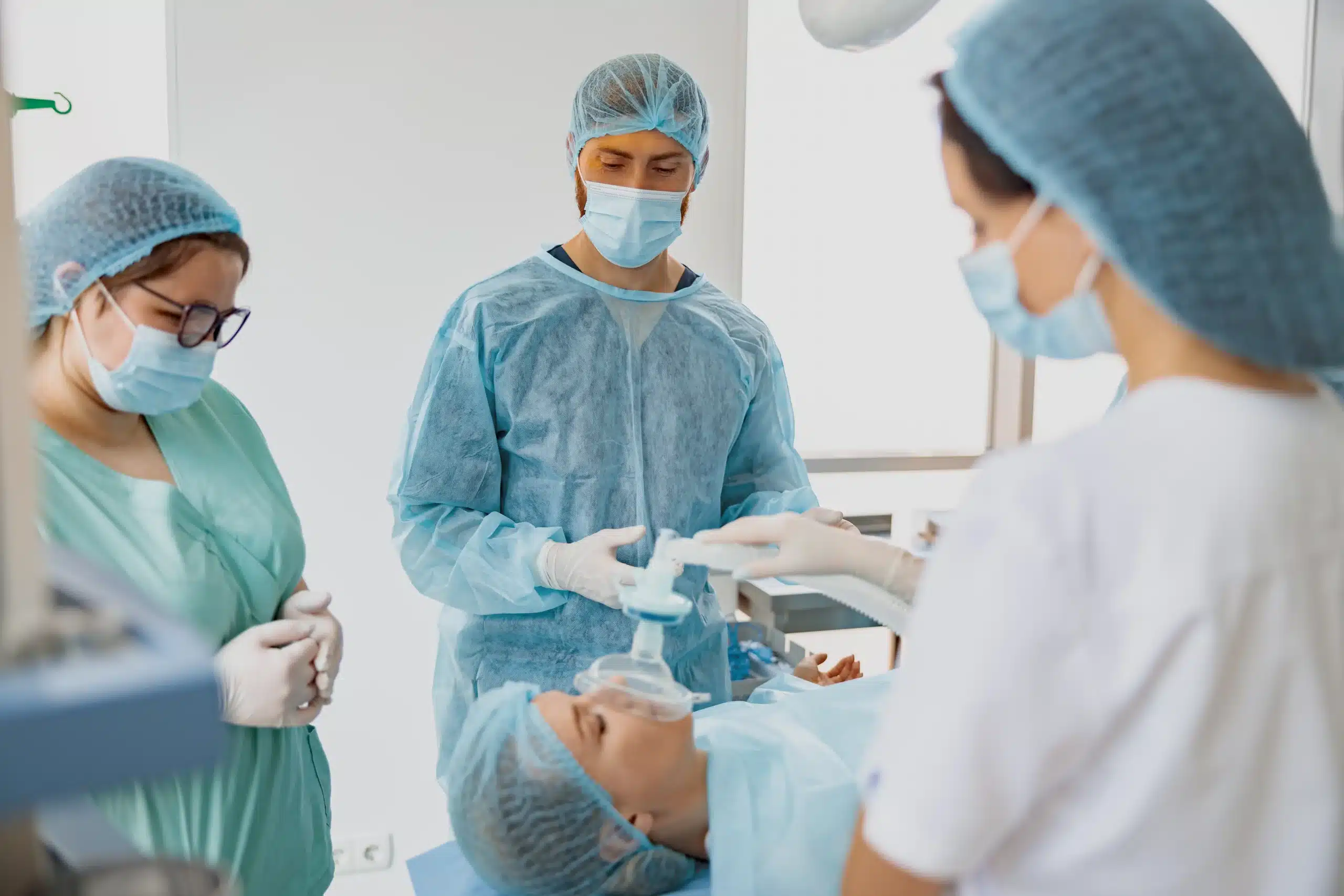Working as a nurse in Redwood City, you know how crucial it is to be prepared for anything. From routine checkups to unexpected emergencies, you need the skills to handle any situation that comes your way. BLS certification empowers you to respond effectively in critical moments, providing essential care when it matters most. This guide explores the world of BLS courses for nurses in Redwood City, breaking down what BLS certification entails, why it’s so important for nurses, and how it can benefit your career. We’ll also help you find the right BLS course in Redwood City, considering factors like cost, scheduling, and course content.
Key Takeaways
- BLS certification is crucial for nurses: It provides essential life-saving skills, boosts your professional standing, and is often a job requirement. Seek out an AHA-certified course with a flexible schedule and hands-on training.
- Finding the right BLS course is simple: Redwood City has several reputable training centers offering various schedules and prices. Consider location, class size, and discounts when choosing.
- Maintaining your BLS certification requires ongoing effort: Renew your certification every two years and pursue continuing education to stay current with the latest guidelines and techniques.
What is BLS?
Basic Life Support (BLS) certification equips healthcare professionals, especially nurses, with the skills to respond to medical emergencies. It goes beyond standard CPR, providing a more in-depth understanding of life-saving techniques. For nurses in Redwood City, BLS certification is a crucial part of providing high-quality patient care. It empowers them to handle critical situations confidently and efficiently.
What Does BLS Training Cover?
BLS training covers essential skills, including high-quality CPR for adults, children, and infants; how to use an AED; and effective relief of choking. It also emphasizes teamwork and communication during emergencies. BLS training provides the knowledge and skills required to follow algorithms effectively, ensuring the best possible outcome for the patient. BLS certification for nurses also covers advanced airway management and other specialized techniques relevant to a nursing environment. As a nurse, it’s beneficial to have both CPR and BLS certification, as the comprehensive knowledge and skills you gain will ensure you’re prepared to respond effectively in a broader range of emergency situations.
Why is BLS Important for Nurses?
BLS certification is essential for nurses for several reasons. First and foremost, it directly impacts patient safety, giving nurses the tools to respond effectively in life-threatening situations. This BLS certification demonstrates a commitment to providing excellent care and enhances your professional credibility. Many healthcare facilities require BLS certification for nursing positions, making it a valuable asset for career advancement. The confidence and skills gained through BLS training translate to better patient care and a more positive work environment. It also helps nurses meet the requirements of their profession and stay up-to-date with the latest life-saving procedures.
Best BLS Course Providers in Redwood City
Finding the right BLS course can feel overwhelming, so I’ve compiled a list of reputable providers in Redwood City to help you get started. Whether you’re looking for flexible scheduling or a specific learning environment, one of these options should be a good fit.
Redwood City CPR Classes
Redwood City CPR Classes offers AHA-certified BLS courses. With classes available daily from 8 am to 10 pm, they provide a flexible schedule that accommodates busy professionals and students. They also offer group discounts, making them a great option for teams or businesses. Check out their website for their low price guarantee. In addition to BLS, they also offer ACLS, PALS, and First Aid training.
Safety Training Seminars
Safety Training Seminars is known for its range of American Heart Association (AHA) certified classes, including BLS, CPR, ACLS, and PALS. Their focus on flexible scheduling and convenient locations makes them a popular choice. They frequently update their course offerings, so it’s a good idea to visit their site for the latest schedule. For those specifically interested in BLS certification, this guide offers helpful information.
Stanford Health Care
Stanford Health Care emphasizes the necessity of BLS certification for nurses, recognizing it’s a requirement in almost every medical facility. Their training ensures nurses are well-prepared to handle emergencies effectively. This comprehensive nurse’s guide to BLS offers additional insights into the importance of BLS for nurses.
American Red Cross
The American Red Cross provides comprehensive BLS training tailored for healthcare providers. Their courses equip nurses with essential skills to respond effectively in emergency situations. They offer various learning formats, including online and in-person options. This article highlights the key benefits of BLS training for healthcare professionals.
How Long Does BLS Training Take?
One of the first questions nurses ask about BLS certification is how much time it requires. It’s a valid concern—everyone’s busy! Fortunately, BLS training is designed to be efficient and flexible, fitting around your schedule. Let’s break down the process:
Online Learning
BLS certification begins with an online learning component that typically takes one to two hours. You can complete this portion at your own pace, pausing and resuming as needed. This self-directed approach lets you fit the training around your other commitments. Redwood City CPR Classes offers this convenient online option.
Hands-on Practice
After completing the online portion, you’ll move on to the hands-on skills practice session. This part takes place at a testing center and involves about 40 to 60 minutes of in-person skills testing. You’ll use a voice-activated mannequin to practice your skills. While an instructor isn’t physically present during the test, support is available by phone if you have any questions. You can find more information about this process at Bay Area CPR.
Time Commitment
Redwood City CPR Classes offers classes almost every day, from 7 am to 6 pm, making it easy to find a time that works for you. With the flexible online component and the short in-person skills session, you can earn your BLS certification without a major disruption to your work or personal life.
How Much Does BLS Certification Cost in Redwood City?
Getting BLS certified doesn’t have to break the bank. Let’s explore the typical costs associated with BLS certification in Redwood City so you can plan accordingly.
Average Costs
The average cost for BLS certification in Redwood City is around $120. This usually covers the online portion of the course, the skills test, and your official American Heart Association (AHA) certification card, which you’ll receive the same day. This streamlined process makes getting certified quick and easy.
Discounts and Price Matching
Many training centers in Redwood City, including Redwood City CPR Classes, offer competitive pricing and a lowest price guarantee. They often match competitor prices, so you get the best possible deal. This is especially helpful for nurses and other healthcare professionals who regularly renew their certifications. If you’re registering with colleagues, ask about group discounts to save even more.
Other Expenses
While the standard BLS course fee typically includes everything, some providers might charge extra for things like replacement cards or additional study materials. Contact the training center directly to confirm pricing details and avoid surprises. Getting a clear picture of the total cost upfront helps you budget effectively.
How to Sign Up for a BLS Course
Getting your BLS certification is straightforward. Here’s how to register and what to expect:
Registration Steps
Redwood City CPR Classes, offered by Safety Training Seminars, makes signing up for a BLS course easy. They offer AHA-certified courses in CPR, BLS, ACLS, PALS, and First Aid. With classes offered daily from 8 am to 10 pm, their flexible schedule easily accommodates busy professionals and students. To get started, visit their website to view the class schedule and register for a session that fits your schedule.
Materials and Preparation
The BLS CPR course includes two parts: online learning (1–2 hours at home) and hands-on skills practice (40–60 minutes at a testing center). Completing the online portion beforehand lets you focus on the practical skills during the in-person session. Having your BLS for Healthcare Providers certification on your resume or CV can give you an edge, especially when you’re starting out in healthcare. You can learn more about the positive impact of BLS certification for healthcare providers from resources like this article on the positive effects of BLS.
Benefits of BLS Certification for Nurses
As a nurse, your primary focus is patient well-being. A BLS certification equips you with the skills to make a real difference in critical situations. It’s not just a piece of paper—it’s proof of your dedication to providing excellent care. Let’s explore some key advantages of earning your BLS certification.
Improve Patient Care
BLS certification empowers nurses to respond effectively during emergencies. Think of it as your toolkit for handling cardiac arrest, respiratory distress, and other life-threatening conditions. BLS training provides the knowledge and hands-on practice you need to deliver immediate, high-quality care, potentially saving lives. This ability to confidently manage crises not only improves patient outcomes but also creates trust and security among your patients and their families. It also allows you to work effectively as part of a team during a crisis. Clear communication and coordinated actions are essential in these situations, and BLS training prepares you to play a vital role in the team’s success.
Advance Your Career
In a competitive healthcare environment, a BLS certification is a valuable asset that can open doors to new opportunities. Many healthcare institutions prefer or require nurses to hold a current BLS certification. It demonstrates your commitment to professional development and strengthens your resume, making you a stronger candidate for promotions and specialized roles. A BLS certification can give you a competitive edge, whether you’re aiming for a leadership position or exploring new challenges. It shows potential employers that you’re dedicated to staying up-to-date with the latest life-saving techniques.
Meet Requirements
BLS certification is often mandatory for nurses in most healthcare settings. Medical facilities adhere to strict standards to ensure patient safety, and BLS certification is a cornerstone of these standards. Maintaining a current certification demonstrates your compliance with these regulations and your commitment to providing the highest standard of patient care. It also allows you to transition smoothly between different healthcare settings. By holding a current BLS certification, you ensure you’re prepared to provide essential care wherever your career takes you.
What Happens During a BLS Course?
This section covers what you can expect during a typical BLS course, from the key topics covered to how your skills will be assessed. Understanding this information can help you feel prepared and confident going into your training.
Key Topics
BLS certification courses equip healthcare professionals, including nurses, with the fundamental skills needed to respond to medical emergencies. These courses cover essential topics, building a strong foundation for providing effective basic life support. You’ll learn how to recognize life-threatening situations, including cardiac arrest and respiratory distress. The curriculum also emphasizes the importance of teamwork and clear communication during emergencies. BLS builds upon CPR training, providing a more comprehensive understanding of life-saving techniques. This broader scope makes BLS certification beneficial for nurses, preparing them for diverse emergency situations.
Skills Assessment
BLS courses aren’t just about learning the theory; they also involve hands-on practice and skills assessment. You’ll learn how to perform chest compressions, provide rescue breaths, and use an AED (automated external defibrillator). Because quick action is crucial during emergencies, BLS training emphasizes the importance of immediate intervention. The skills you gain will allow you to confidently apply these techniques, potentially increasing a patient’s chances of survival. Instructors will guide you through simulated scenarios, providing feedback and ensuring you’re comfortable performing each skill correctly. BLS training also covers the algorithms healthcare providers use to assess and manage various emergency situations, ensuring the best possible patient outcome.
How to Maintain Your BLS Certification
As a nurse, maintaining your BLS certification is crucial for providing high-quality patient care and advancing your career. It shows you’re committed to staying up-to-date with the latest life-saving techniques and ensures you’re prepared to handle emergencies. This section covers how to renew your certification and the importance of continuing education.
Renew Your Certification
BLS certification is typically valid for two years. Renewing your certification before it expires is essential to avoid gaps in your qualifications. Most healthcare institutions require nurses to have a current BLS certification, so staying current is vital for your career. Check with your employer or the American Heart Association for specific renewal requirements. You can often renew online or through in-person courses like those offered at Redwood City CPR Classes. Planning ahead and scheduling your renewal ensures a smooth process and prevents any lapse in your certification.
Continuing Education
Even after renewing your BLS certification, continuing education is key to refining your skills and learning about updated protocols. This might involve attending workshops, taking refresher courses, or completing online learning modules. These opportunities offer numerous benefits, from boosting your confidence to improving teamwork and communication. Continuing education in BLS helps you comply with regulatory requirements and can create opportunities for career advancement. Staying current with the latest techniques and best practices can significantly improve patient outcomes and make you a more valuable member of your healthcare team. For convenient and comprehensive BLS training, explore the courses available at Redwood City CPR Classes. They offer a range of options designed to fit your schedule and learning style.
How to Choose the Right BLS Course in Redwood City
So you’re ready to sign up for a BLS course in Redwood City? Great! Choosing the right course can feel overwhelming with so many options. This section breaks down what to look for and how to compare courses to find the perfect fit.
What to Look For
First, confirm the training provider offers AHA-certified courses in CPR, BLS, ACLS, PALS, and First Aid. AHA certification ensures your training aligns with nationally recognized standards and is widely accepted. A good BLS course will cover the latest American Heart Association guidelines, making sure you receive up-to-date training on life-saving techniques. Look for courses that offer hands-on practice and skills assessment. This practical experience is crucial for building confidence and mastering the techniques.
Beyond the basics, consider your schedule and learning style. Do you prefer in-person classes or the flexibility of online learning? Check if the course offers weekend or evening options to accommodate your availability. Also, think about the class size. Smaller classes often allow for more personalized instruction and interaction with the instructor. Finally, check if the provider offers group discounts or a low-price guarantee.
Compare Your Options
Once you’ve identified a few potential providers, take the time to compare them. Safety Training Seminars offers a range of American Heart Association (AHA) certified classes, including BLS, CPR, ACLS, and PALS. They are known for their flexible scheduling and convenient location. You can also find BLS, ACLS, or PALS courses through other providers like Bay Area CPR. Visit their websites or give them a call to learn more about their course offerings, schedules, and pricing. Reading reviews from past students can also offer valuable insights into the quality of instruction and overall experience. By carefully comparing your options, you can choose a BLS course that meets your needs and prepares you to provide high-quality care.
Related Articles
- BLS Certification Near Me: Your Complete Guide – Redwood City CPR Classes
- Find BLS Classes Near Me: A Practical Guide – Redwood City CPR Classes
- BLS Recertification Near Me: A Complete Guide – Redwood City CPR Classes
- BLS Classes in Redwood City: Your Complete Guide – Redwood City CPR Classes
- BLS Training Near Me: Your Certification Guide – Redwood City CPR Classes
Frequently Asked Questions
Why is BLS certification important for nurses? It’s essential for patient safety, equipping nurses with life-saving skills for emergencies. BLS certification also enhances professional credibility, often being a requirement for nursing positions and career advancement. It demonstrates a commitment to high-quality care and keeps nurses current with the latest procedures.
What does a BLS course typically cover? BLS courses cover core life-saving techniques like high-quality CPR for adults, children, and infants, AED use, and relief of choking. They also emphasize teamwork, communication during emergencies, and the effective use of algorithms for managing various emergency situations. BLS certification builds upon standard CPR training, providing a more comprehensive skill set for healthcare professionals.
How long does it take to get BLS certified? BLS certification involves an online component (1-2 hours, self-paced) and a hands-on skills session (40-60 minutes) at a testing center. The flexible online portion allows you to fit the training around your schedule, while the in-person session focuses on practical application and assessment.
How much does BLS certification cost, and are discounts available? BLS certification typically costs around $120 in Redwood City, covering the online training, skills test, and AHA certification card. Many providers offer competitive pricing, a lowest price guarantee, and group discounts, making it more affordable, especially for groups or those needing recertification. It’s always wise to confirm pricing details directly with the training center.
How do I find and register for a BLS course in Redwood City? Several reputable providers offer BLS courses in Redwood City. Look for AHA-certified courses that fit your schedule and learning preferences. Check for online or in-person options, weekend/evening availability, and class size. Comparing providers like Redwood City CPR Classes, Safety Training Seminars, and Bay Area CPR, including their websites and reviews, can help you make the best choice.
